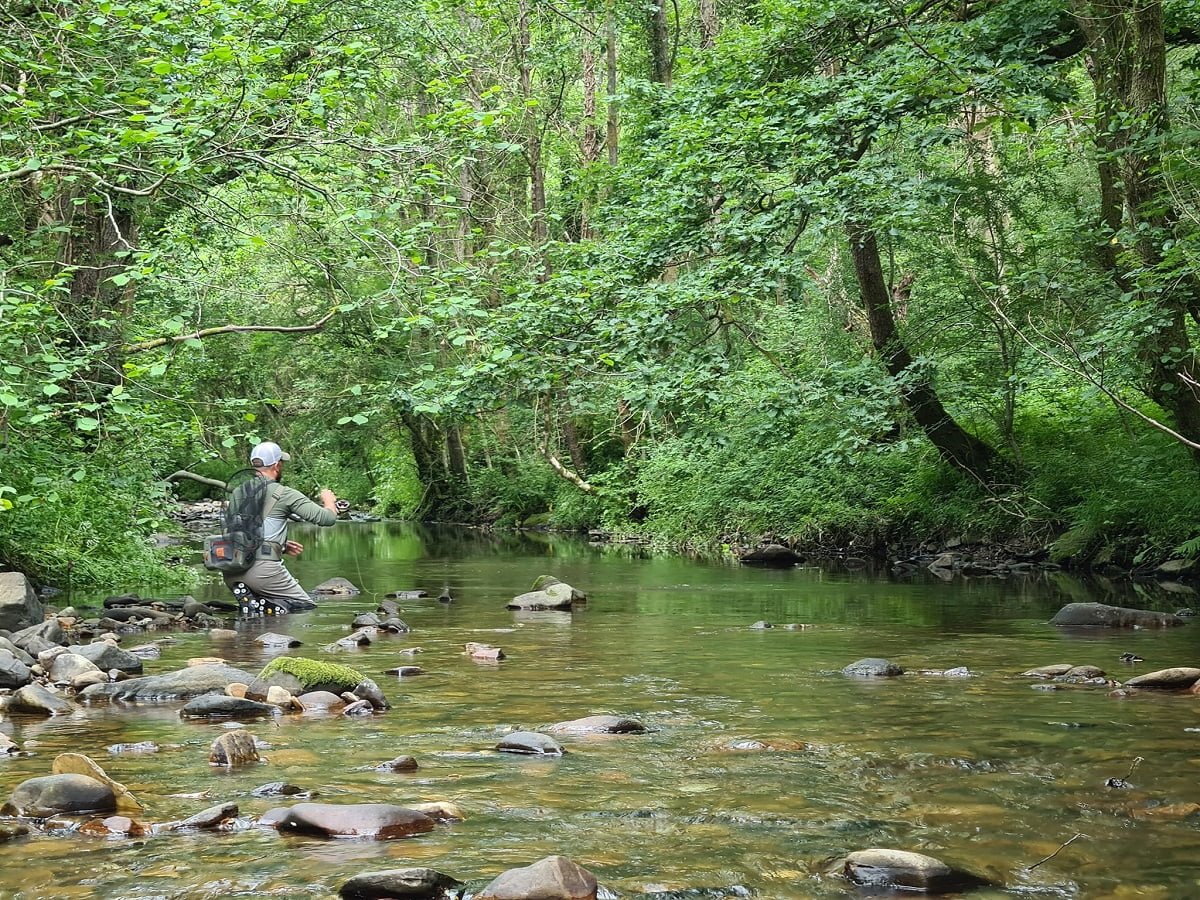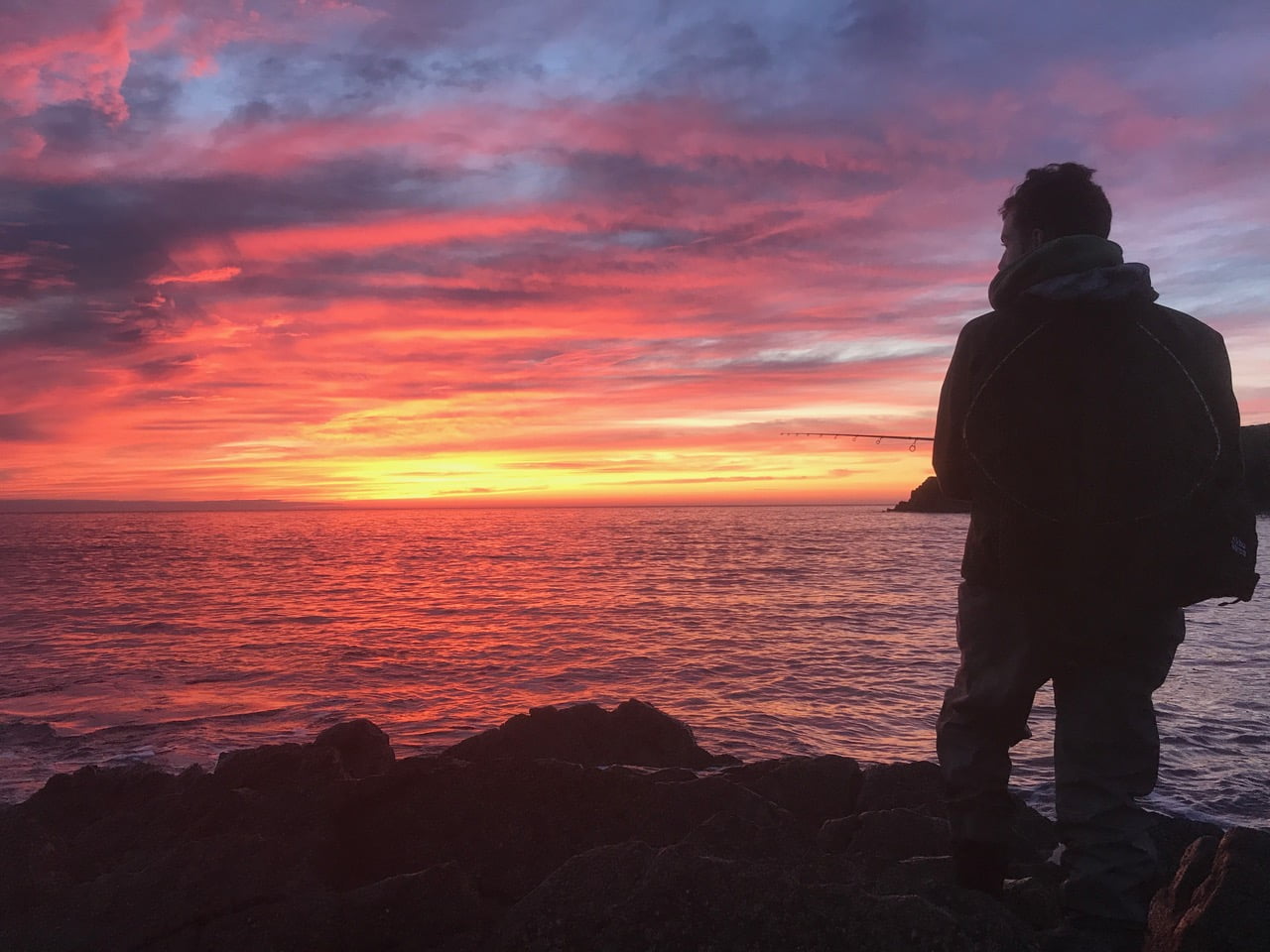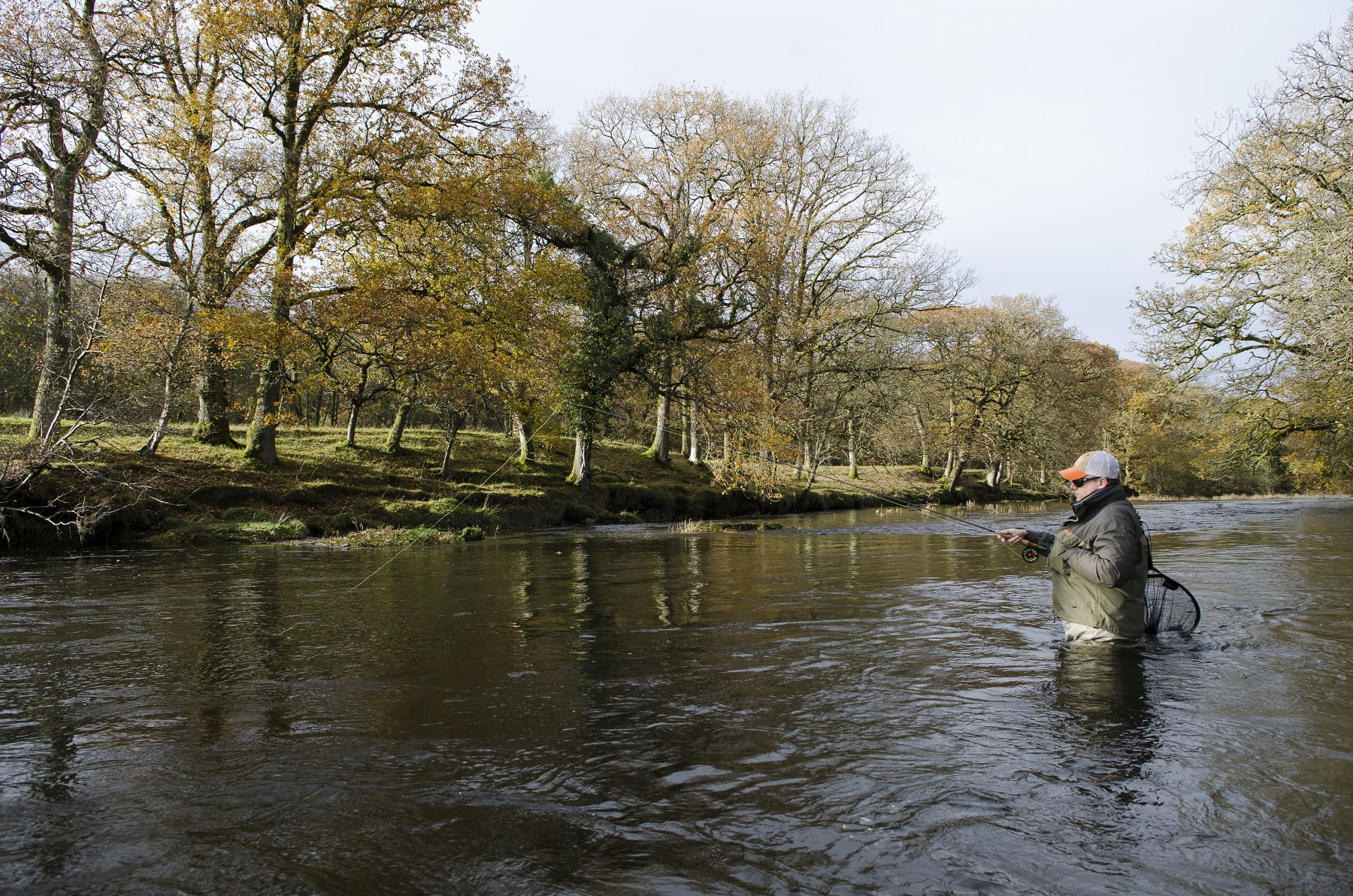Keeping Things Simple – A Guide to Fishing Small Streams
Fly fishing on small streams in Wales has risen in popularity over the past decade. Small waters which, previously many would have passed without so much as a thought, are now earning a reputation for fantastic and challenging fishing, as well as for their high numbers of wild brown trout. The casting conditions may be a little more confined and the trout a little smaller than those found on the main-stems, but what they lack in size, they make up for in both speed and beauty. And there is nowhere better to do it than in Wales, which has literally thousands of miles of small streams that are full of wild fish.

I’m somewhat of a small stream addict, so much so that I regularly return from my small stream exploits with scrapes, an aching back and bruised knees, and usually totally exhausted, but that’s just part of the fun. If you don’t work for these wild fish, they won’t come easily.
I’m asked by anglers time and time again ‘what flies should I use to on the tributaries/small streams?’. My reply is ‘anything’. In fact, fly choice, in my opinion, is a secondary concern. We will, of course, talk about flies in a little while, but if you only take one tip away from this article, let it be one thing. The trout in our small wild streams and tributaries are easily spooked, so we have to adjust our fishing styles to reflect this. These small wild trout have learnt to survive in an environment with, generally, faster flows and less food than that enjoyed by their main-stem cousins. Because of which, the size of fish are generally smaller but usually fin perfect and shining examples of what a brown trout should look like, in miniature or otherwise. A fish of 8oz is seen as a good fish and one of 12oz is a fish to truly talk about.
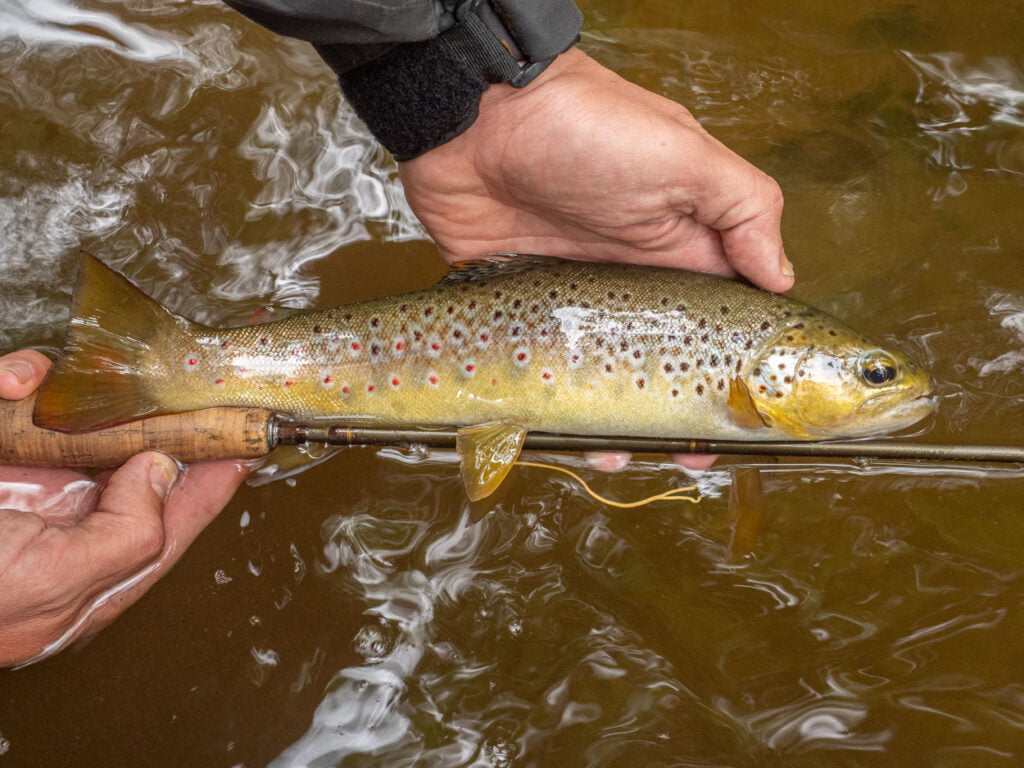
The Anglers Exhaustion mentioned above is due to the fact that, if you want to catch these fish successfully, you are required to creep your way into position. This often sees me and my fellow stream-obsessed anglers crawling, sometimes, on hands and knees, but often crouched over, unwilling to silhouette ourselves to our spotty friends as much as possible. That’s it. If you stop reading now, and if you only apply a little more stealth to your small stream fishing (slow down your wading or, better yet, stay out of the water as much as possible, get used to lots more side-casting from down on your knees or learn to crouch like a ninja in the night in order to creep your way into position behind an un-expecting trout), your catch rate will improve.
Now that our main objective is out the way, let’s talk about flies.
Small Stream Flies
For small streams, I use just five patterns. After the hard work of hiking into these wild and beautiful places; after creeping on your hands and knees into a suitable casting position and, if you’re lucky, have avoided spooking every fish in the pool/run, it’s nice to be able to just relax a little and to be able to choose a fly from a simple collection and just know it will work. The micro-environs of our small free-stoners don’t usually have the volume of hatches that the main stems do, neither do they have the same fishing pressure.
Because of which, the fish are wild and hungry, and in the faster running riffley water a large, bushy dry fly will usually be met with a confident and quite violent rise. In the interests of simplicity, my selection of flies are also easy to tie, another bonus if, like me, you can’t be bothered with over-complicating something that’s going to get wet, bitten to shreds, or lost in the trees.
Consisting of four dry flies and one nymph, it’s possible to tie up a full box of my favourite patterns in just one evening spent at the vice; these are a Klinkhamer (in black or light-tan), a CDC & Elk hair caddis, a shuttlecock/chironomid emerger, a generic paradun, and my only nymph, a tungsten bead-head pheasant tail-style nymph. That’s it, nice and simple.

Elk hair Caddis 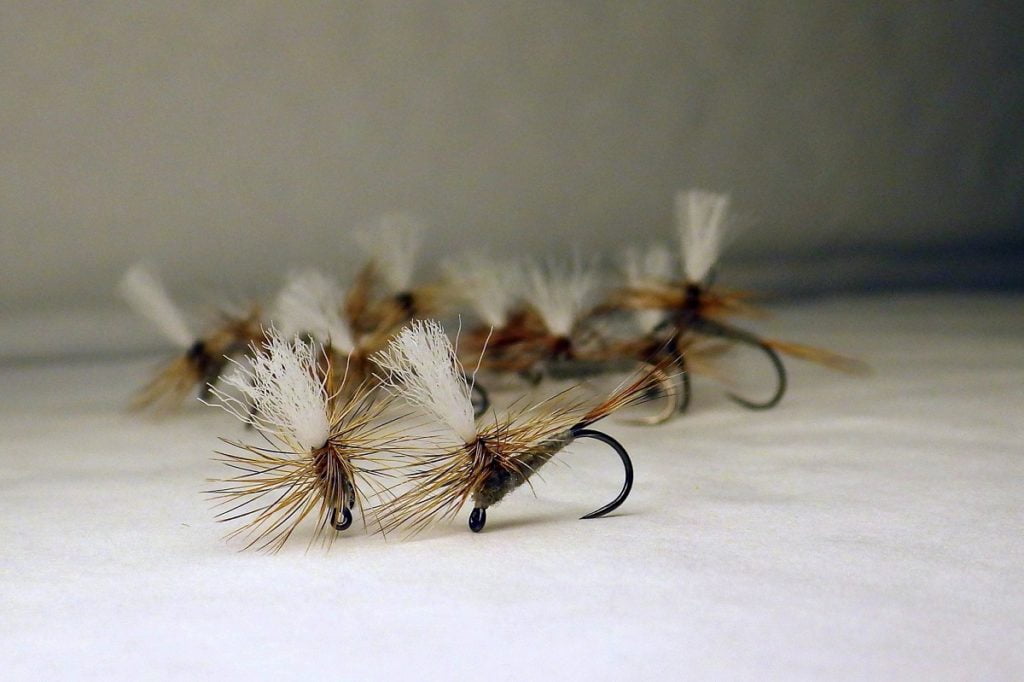
Generic Paradun
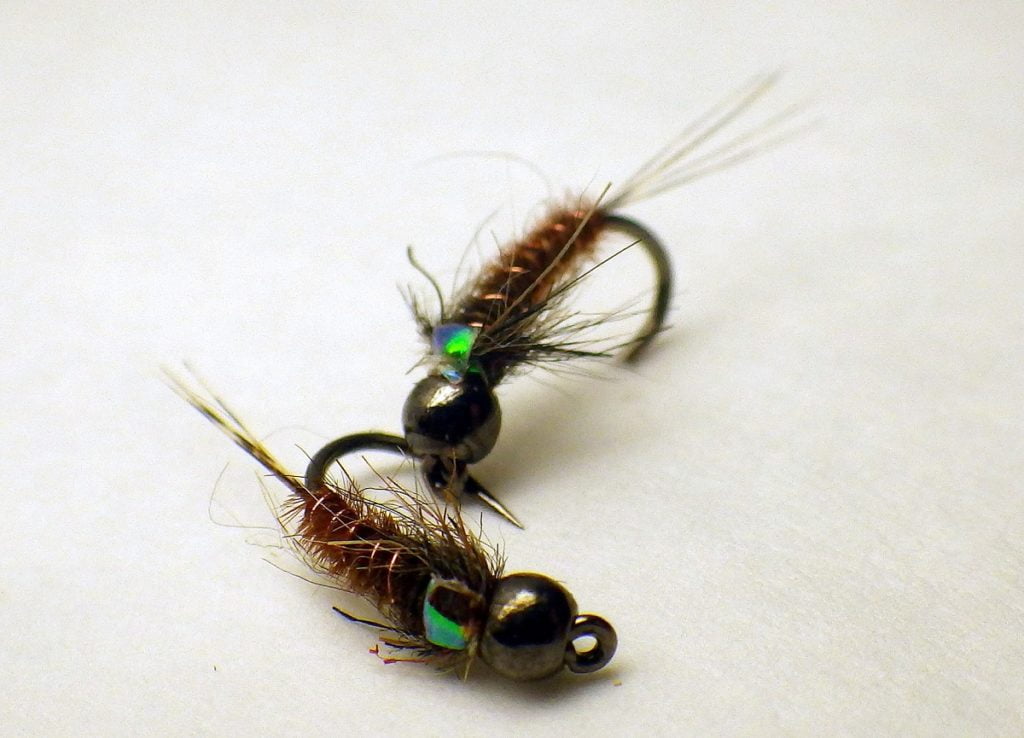
Pheasant tail nymph 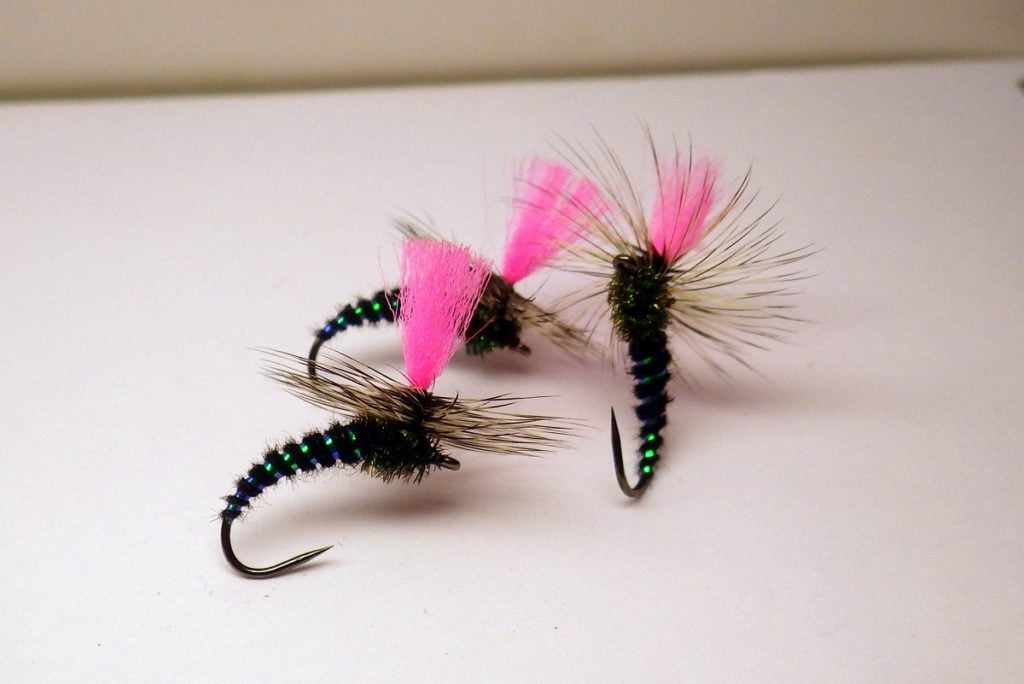
Klinkhamer dry fly

Chironomid-Emerger 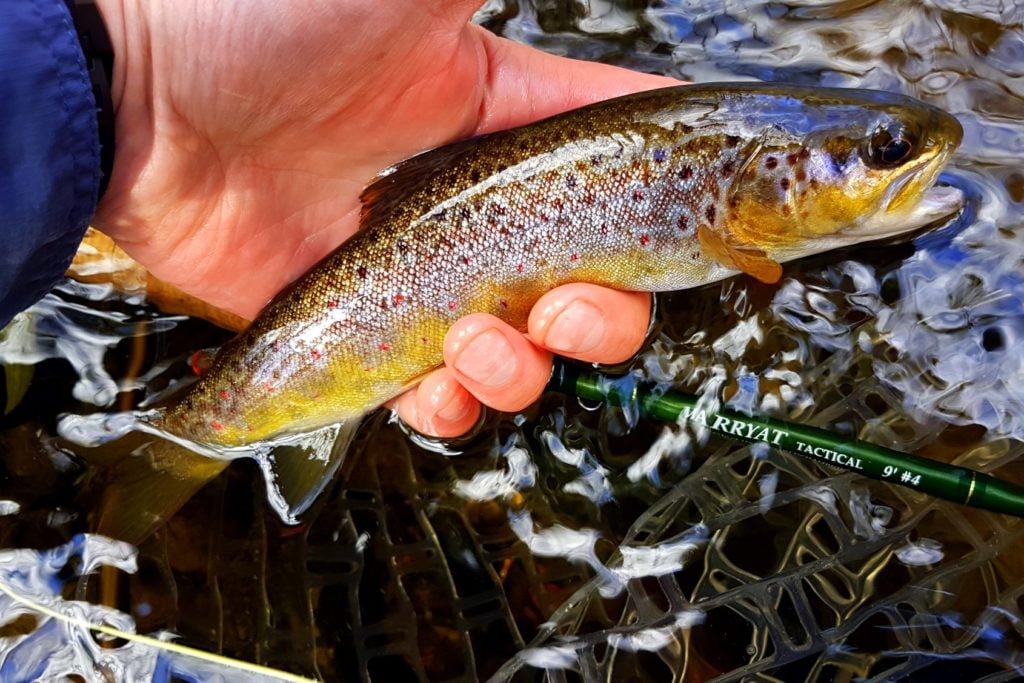
A small stream trout
All of the flies I’ve mentioned above work, it’s as simple as that, although the above selection is just my personal choice due to the confidence I have in them (and due to the fish they’ve caught!) That said, you may have your own favourites, but the important thing to remember here is simplicity. The trout in these wild micro-environments are as opportunistic as they come and will snap up a larger-than-usual dry fly trundled down a fast rapid with lightning reflex. Because of this, I’ve purposely kept the fly selection to a bare minimum. As long as your flies generally mimic the naturals, and as long as you have confidence in your flies, as long as you are able to make your approach as stealthily as possible and can present your artificial without spooking the wily little devils, you’ll catch fish.
Fishing Techniques
Stealth is the name of the game here so fishing your flies upstream, and from a position behind the upward facing trout, is a must. In the confined environments of small streams, you will find overhead casts become more and more impossible and even side casts will sometimes be a little too much; instead, roll casts and short-range casts become standard.
Keep as low as possible, literally, and whenever you are able, get down on your knees. This form of fishing can be hard work but can mean the difference between zero and dozens of fish. Aim for every run, riffle and every piece of slack water behind, in front and to the sides of stones/boulders, and don’t be afraid to search out the slack water too. The slower runs will require much more care, however, as your movements will have to be slow and gentle, otherwise, you risk spooking the fish with. If you can help it, stay out of the water. If you must wade in these slower running areas, be careful and try to avoid making waves, so to speak.

Stream Rods, Reels and Fly Lines
More of a personal application can be seen in the use of rods. I have a range of small stream loving friends who, in turn, fish with a differing range of rods; from 5′ full-flex wands to 8′ tip-flex canons. From #0 weights to #4 weights, the rod choice is totally up to you. More importantly, you need a rod which is comfortable for you and one which won’t over gun the fish. A 3wt is generally seen as standard, but you can go lighter with either a 2wt or even a 1wt. That said, and if things turn windy, you’re on your own. Length-wise, again this is personal preference; however, if you’re going to be fishing the small, enclosed, and confined spaces of a small stream environment, pick a rod length to suit.
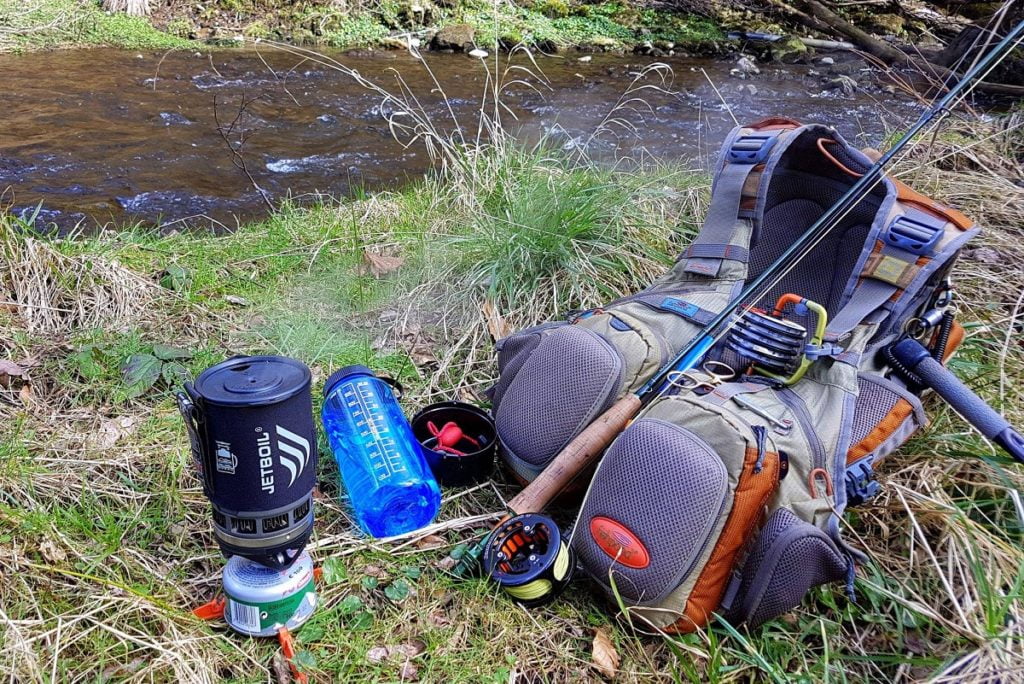
Action-wise, and as you’ll be fishing ‘close-quarters’, a rod with a fuller flex rating/softer action would be ideal as it will load a short length of the fly line much easier than a fast/tip-flex rod.
My personal setup for the small streams of Wales is a 4wt 9’ in early season when the trees are yet to bloom fully (I can get away with the longer length, or in later season when casting conditions become a little tighter, a #3 weight 7’ rod. Both rods have a mid-flex rating.
Travel Light
With your small fly box of five patterns, a bottle of water/flask of coffee/hipflask of whisky and an energy bar or two, you’ll be set for a day on the tributaries and small streams. You will be walking a lot in these small stream environments too, so it is important to travel light, or you’ll be tired before you get anywhere, therefore, light-weight wading boots help.
I also find a Chest/Backpack holds everything comfortably and helps disperse the weight easily enough that you aren’t feeling tired or experiencing back pains after just a mile. Add to this a pair of breathable waders, and you’re done.
Leader & Tippets for Small Streams
Regarding leader and tippet material, this again comes down to simplicity. I personally favour 6X/3.5lb tapered leaders around 7’ in length. I’ll start by fishing directly off the end of the tippet, or after the expected changing of flies/shortening of leader, I’ll add an applicable length of 6X tippet. Tippet choice is a personal affair, so each to their own.
The Results
Stealth plus simple flies equals wild brown trout, it’s as simple as that. If you aren’t absolutely shattered after a full day on a small stream, you’re doing it wrong.
Where to fish?
There are literally hundreds of options for small stream fishing in Wales, but one of the best ways to access them is through the Fishing Passport which is linked to the Book Fishing section of the Fishing In Wales website.
You can book day tickets online, which allow you to reserve a whole beat to yourself, or purchase a wild stream season pass, which for a very reasonable fee gives you unlimited access to around 60 small streams.
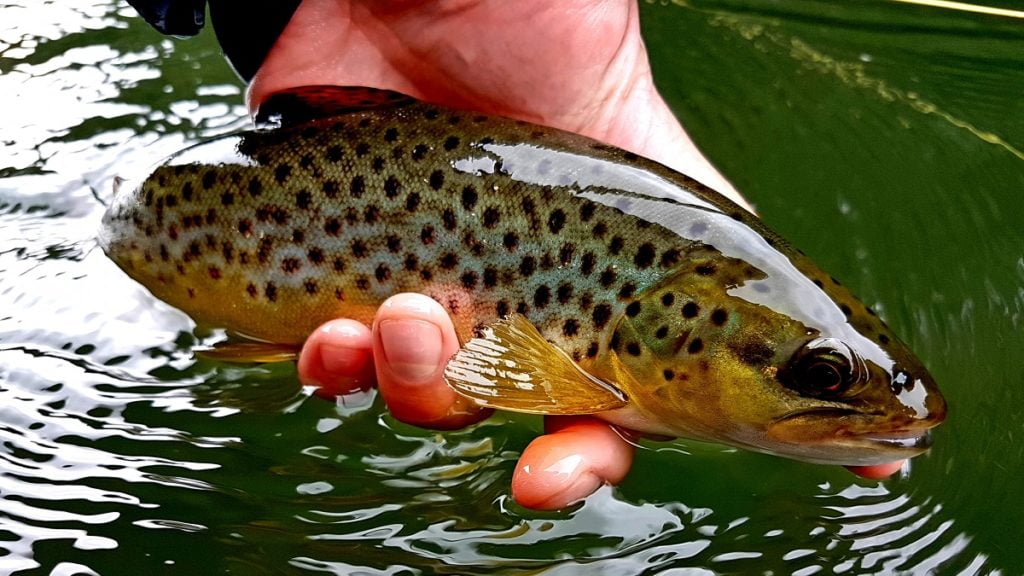
Happy streaming!
Gareth
Words: Gareth Lewis
Images: Gareth Lewis/Alan Parfitt/Liam Walsh
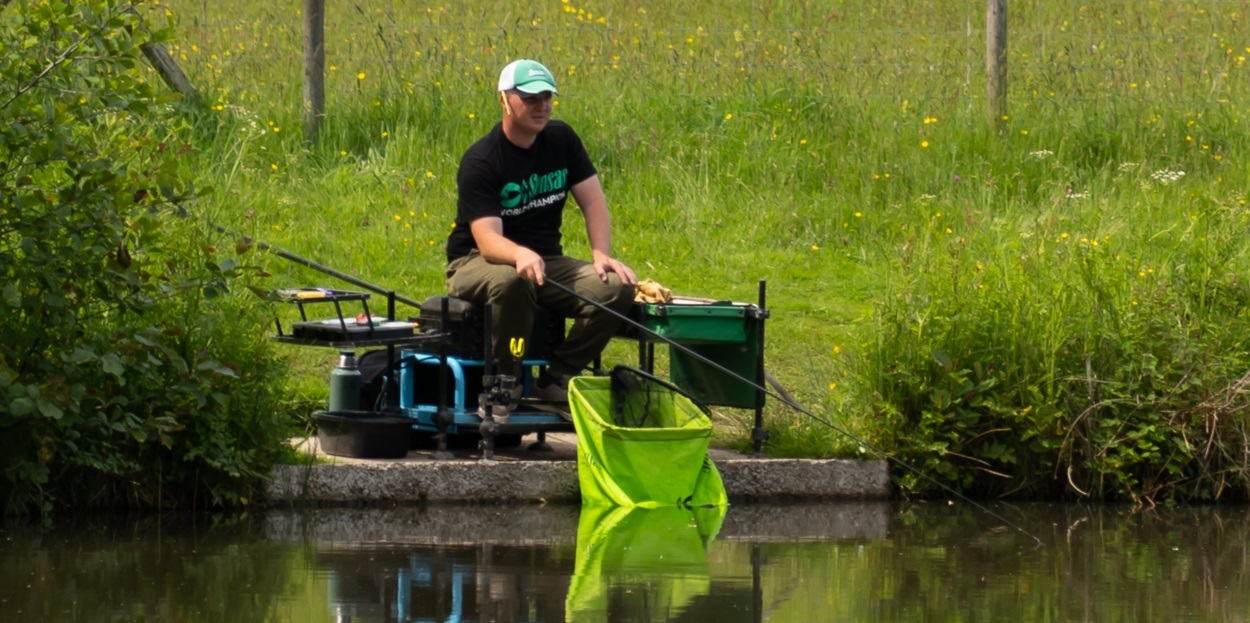
Cast a line and get back to your happy place
As we near National Fishing Month in August, Natural Resources Wales (NRW) invites everyone to experience the joy and…
Read More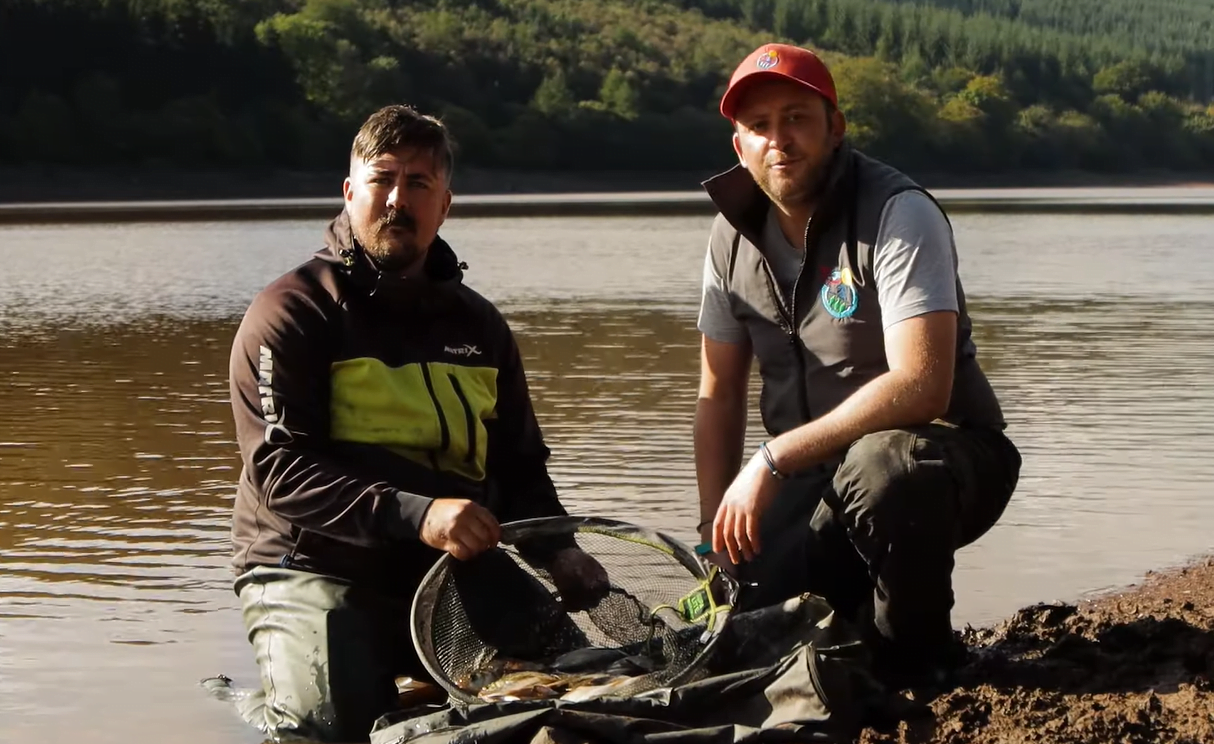
Take A Friend Fishing is Back
‘Take a Friend Fishing’ is on from 27th July to 1st September 2024 for National Fishing Month! Get together with…
Read More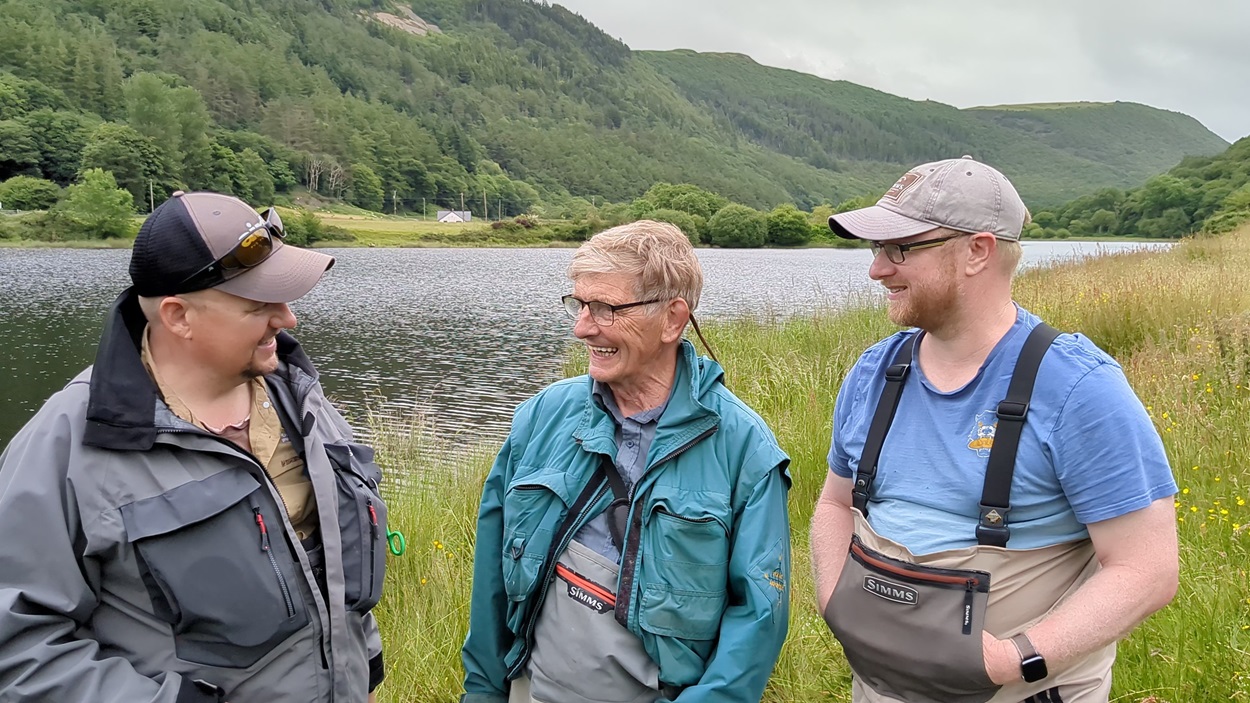
10 Lake Challenge VIDEO - Aberystwyth Angling Association
In this ‘summer special’ video Alan ‘Parf’ Parfitt, Ceri Thomas and Mark Evans take on the ’10 Lake Challenge’ which…
Read More
